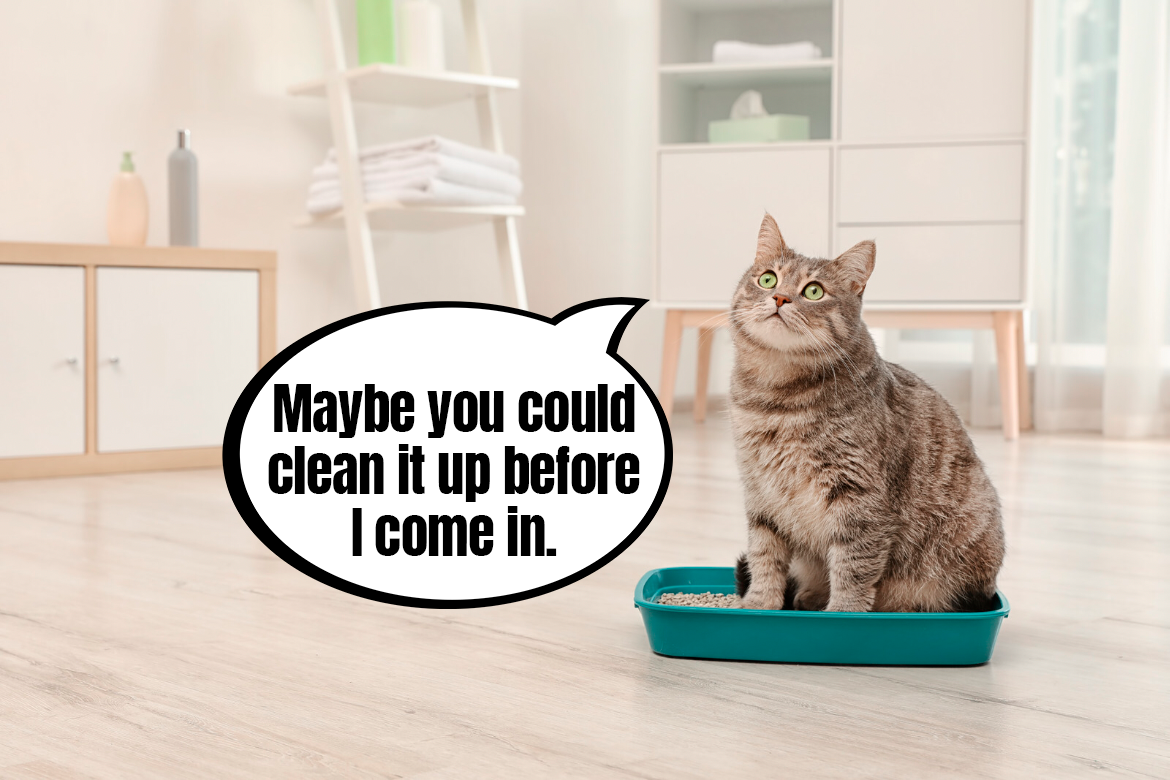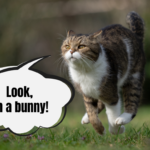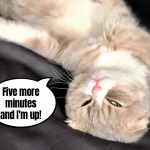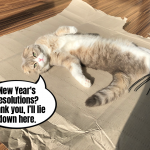Cats are often seen as low maintenance pets – contrary to dogs, cats don’t need to be walked everyday to the outdoor bathroom, regardless of the weather or time of day. Pfff! Every self-respecting cat would be offended with a judgement like that. After all, understanding cats’ needs is an art form which cats have been trying to teach us for centuries and we still don’t understand many of their needs. Without looking far for good examples, the inside of the cat’s litter box. There’s no golden means to finding the best cat litter and the brands are racing each other with their marketing strategies, trying to promote their product as the one your cat would choose themselves. But how is it in reality? What cats like to dig around in and what should we put inside the litter box?
Grits, sands, granules – different types of cat litter
Among many people of the older generation there’s a common belief that it’s enough to fill the litter box with sand collected outside or an old newspaper. And though for outdoor cats who deal with their toilet needs mostly outside it won’t make much difference, for the typical domestic cat a newspaper or outdoor sand can be not only uncomfortable, but also dangerous because of the possibility of parasites residing in the sand. There’s a huge variety of cat litters in pet shops now, so going for the makeshift option seems unreasonable.
What options are there actually to choose from? By default, cat litters include bentonite (mineral) litters, silicone (silicate) and, more and more popular, plant based litters, beneficial for those who want to be eco and environmentally friendly. Each of these options will have its pros and cons, but before we get into them, let’s remember one thing. Cat litter should be chosen for the cat, taking into account their individual needs and preferences. Our expectations, as cat Carers, especially when it comes to the color, smell or ease of cleaning up the litter are in fact second- and third-rate.
Bentonite, silicate or natural, plant based litter?
Bentonite cat litter is probably the most popular choice among cat Guardians, getting it’s recognition mainly because of the clumping properties of bentonite and its low price. It is made with a particular, crushed up rock – bentonite, which is highly absorbent and creates solid litter clumps, easy to clean the cat droppings with a scooper. Bentonite litter is available at a low price point and easily found in pet shops and supermarkets. They’re absorbent and affordable, but have their issues as well. Besides the characteristic, cement-like smell (even with the odorless version), wet bentonite creates a slurry that then gets hard and, upon swallowing, could block a cat’s digestive tract or, if we decided to flush it down the toilet, our sewerage. Bentonit is also highly dusty, so you have to be prepared for often cleanup around the litter box.
A solution that seems to be getting more people interested recently is the natural, plant-based and biodegradable litter. It’s main advantage is that it’s much more safe for the environment. Among the natural litter there are wood pellets – non-clumping, but great at containing the smells and quite absorbent; and corn litter, available in both clumping and non-clumping varieties, serving as a great middle ground between the wooden pellets and bentonite litter in therms of both the advantages and the consistency. Unfortunately, corn litter has one major disadvantage – some cats like the taste of corn so much, they eat the litter out of the litter box. We also tried a grass litter from a polish brand once and what was funny about it was that its color resembled cat poop perfectly and it made it a real challenge to find one in the depths of the litter box 🙂 But the smell of natural grass was great – it was like a fresh meadow (we wonder if cats liked it too:))
As a third option it’s worth thinking about silicate (silicone) litter, mde with a special silica gel that’s a great water absorbent. Depending on the cat Guardians needs, the silicate litter is available in a clumping and non-clumping variety. The biggest plus for the silicone litter, besides its absorbency, is a complete lack of dust (with few exceptions) and great smell reduction. Unfortunately, the silicone balls can easily be transferred on cat’s paws throughout the house and be irritating to some inside the litter box – the granules can be uncomfortable under the paws or rustle, which can scare the cat away. Our boys, Teddy and Kitku Yoda happily use the non-scented silicone litter and like it with no issues. However, stepping on it outside the litter box can be a real pain that makes your teeth grind – ugh!
Which cat litter should you choose?
“Don’t put anything that comes to your mind inside my litter box, hooman. You’re doing your business on a nice porcelain toilet, not a tower of cardboard and freshly cut grass”. Going back to the common attitude of some people who used to (or still do) put sand, cut up newspaper or dirt from the garden into the litter box, it’s easy to imagine a cat saying a sentence like that, contemplating whether or not to enter the litter box or take a dump in the middle of the carpet in the living room. Cats can be picky creatures and as responsible cat Guardians we have to respect their preferences. Not everyone would like to have a big, red, heart-shaped toilet, Las Vegas style. Similarly, not all cats would like to do their business in a litter box full of wood pellets, silicone balls or bentonite litter, all of which could irritate their delicate paws or sense of smell.
The litter should be chosen for the cat, not the human. It’s worth having this thought in the back of your mind, especially during shopping and thinking: “What litter scent will cover up the cat smells the best?” or: “which litter will look the best?”. In both cases the answer should be: “It doesn’t matter as long as your cat feels confident and can comfortably do their thing”. Scented litter can be extremely irritating for some cats – let’s remember that what we smell as a delicate, barely-there scent, gets multiplied by a lot for a cat. And it’s the cat, not the human, who has to stick their nose to the litter when checking the contents of the litter box.
Cat litters vs comfort and safety
To end things up, let’s quickly jump to the matter of cat litter safety. The topic seems to be rarely touched on, because all the options that are available on the market are made with cats in mind. As it turns out, thinking about the cat’s comfort (especially for the paws) or the strong and irritating scent of the litter are solid arguments for carefully considering what’s safe and appropriate for a cat.
If a cat, and it goes especially for kittens, has a tendency to eat the litter out of the litter box, a clumping and hard bentonite or a “tasty” corn litter won’t be a safe choice. We ourselves have had a problem with that with our cat Luis who, because of urinary problems and later, anaemia, must’ve been missing some minerals and developed a taste for the litter. We immediately changed it to a natural one. The litter safety should be also considered in terms of us humans. The dust that comes out of the litter when we’re pouring it into the litter box or scooping out the poops will be inhaled by us regularly for many years of a cat’s life! It’s better to choose the option that won’t be harmful to our lungs. And it all comes down to the matter of waste management as well – choosing the litter that claims to be “safe to flush down the toilet” is of no use in Poland (and probably many other countries), because our law doesn’t allow for any litter to be disposed of this way. The litter and cat waste should always go into the general, mixed trash, which is worth remembering for the sake of our planet (and the city waterworks).
And what do your cats dig around in their litter boxes? Are they playing to form bentonite fossils or maybe feel like they’re in the middle of a forest with their wooden pellets? What are you looking for when you’re buying cat litter? We’ll be waiting for your answers in the comments and we’re curious to know your arguments for and against the different types of cat litter.




